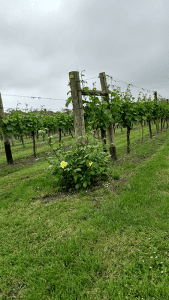Worlds Collide, the new Doctor Who escape room in Reading, proves challenging for Cherry Butler.
Worlds Collide, the first escape game officially based on the BBC series, gives players an hour to solve various puzzles and stop the Doctor’s arch-enemies, the Cybermen, breaking though a tear in the fabric of space and time and “upgrading” the human race.
You don’t have to be a true Whovian to play, but you do need your thinking cap on to make sense of the numerous puzzles.
There are some fun pieces referencing the TV show, but they seem to be window dressing rather than knowledge about them being integral to the game. This adds to the entertainment for fans but means you can play even if you haven’t watched Doctor Who since Tom Baker was in it.
Some of the scene setting was a clever surprise, while some was a tad lengthy without really helping us get to grips with the clues.
Not all the puzzles are Doctor Who or sci-fi related. There are so many that we found it a bit tricky to focus and follow the thread; one thing distracted us for ages, but only worked later. With few of the standard letter/number codes, combination locks or hidden keys, they make for a genuine challenge.
Escape Hunt’s rooms are high tech in comparison with more home-grown games. This slickness works well for the sci-fi theme; the sleek-looking setting lives up to the screen version with plenty of light-up gizmos. On the flipside, automation can occasionally cause frustration when items break down or don’t quite connect.
The minimum age to play is 10, accompanied by an adult. Having young Doctor Who fans with sharp brains and curious minds on your team might be handy! As long as they are prepared for a taxing – but not too tense – time.
A game costs £30-£33 per person depending on the number of players (up to six in a team), so Worlds Collide is priced higher than the other rooms at Escape Hunt Reading. Alice in Puzzleland, Wild West, Viking and pirate themed games cost £20-25 per person, with concessions for students and over 60s.
Reading’s games are upstairs in Kings Walk shopping arcade. Escape Hunt also has rooms in Oxford, Bristol and other cities around the UK and worldwide.
![]() You can find out more and book at escapehunt.com
You can find out more and book at escapehunt.com
Image courtesy of Escape Hunt













